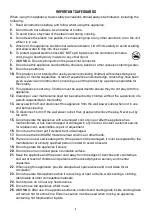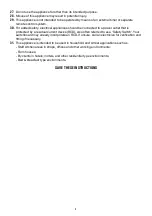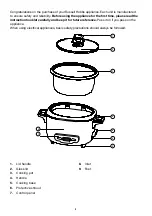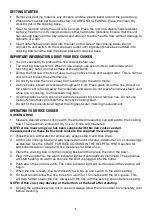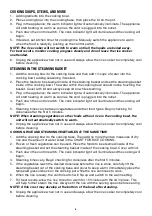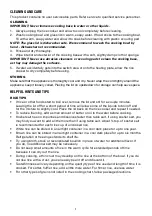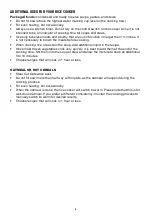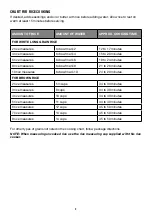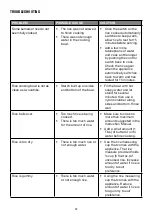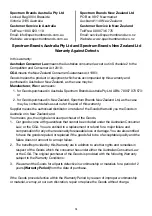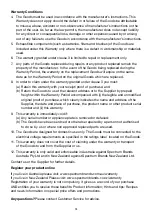
7
CLEANING AND CARE
This product contains no user serviceable parts. Refer service to qualified service personnel.
CLEANING
IMPORTANT: Never immerse cooking base in water or other liquids.
1. Always unplug the rice cooker and allow to cool completely before cleaning.
2. Wash cooking bowl and glass lid in warm, soapy water. If food sticks to the cooking bowl,
fill with warm, soapy water and allow it to soak before cleaning with plastic scouring pad
NOTE: The glass lid is dishwasher safe. We recommend to wash the cooking bowl by
hand - dishwasher not recommended.
3. Rinse and dry thoroughly.
4. Wipe interior and exterior of the cooking base with a soft, slightly damp cloth or sponge.
IMPORTANT: Never use abrasive cleansers or scouring pads to clean the cooking base,
as they may damage the surfaces.
5. If water accidentally gets into the switch area or onto the heating plate, allow the rice
cooker to dry completely before using.
STORING
Make sure that the appliance is thoroughly cool and dry. Never wrap the cord tightly around the
appliance; keep it loosely coiled. Placing the lid on upsidedown for storage can help save space.
HELPFUL HINTS AND TIPS
RICE TIPS
• If rice or other foods start to boil over, remove the lid and stir for a couple minutes.
Leaving the lid off for a short period of time will allow some of the liquids to boil off and
for the mixture to slightly cool. Place the lid back on the rice cooker and repeat if needed.
• To reduce foaming, add a small amount of butter or oil to the water before cooking.
• Kosher salt has no impurities and dissolves faster than table salt. If using kosher salt, you
may find you want to add a little more than if using table salt. About ¾ tsp. of kosher salt
is recommended for each rice cup of uncooked rice.
• White rice can be stored in an airtight container in a cool dark place for up to one year.
• Brown rice can be stored in an airtight container in a cool dark place for up to six months.
Refrigeration or freezing extends its shelf life.
• Try using broth, stock or reconstituted bouillon in place of water for additional flavor. If
you do, no additional salt may be necessary.
• Do not keep small amounts of rice in the warm cycle for extended periods of time
because it can dry out the rice.
• During cooking, a thin crust may develop on the rice at the bottom of the bowl. If you do
not like rice with a crust, you can easily peel it off and discard it.
• Taste/firmness will vary depending on the quality/type of rice used and length of time it is
cooked. For softer, fluffier rice, add a little more water. For firmer rice, use less water.
• For other types of grains not listed in the cooking chart, follow package directions.


